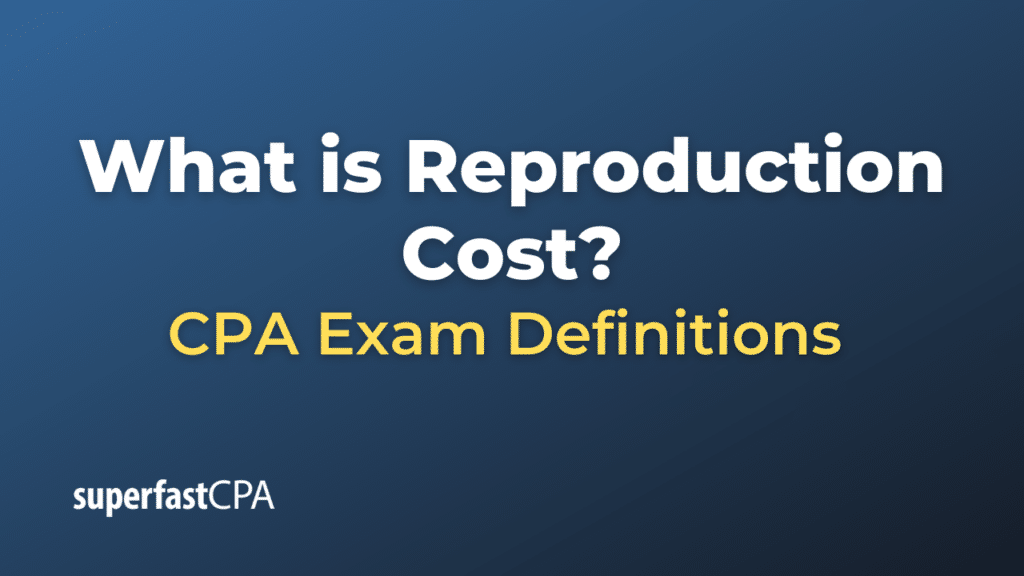Reproduction Cost
Reproduction cost refers to the cost that would be incurred to replicate or reproduce an exact replica of an asset at the current time, considering current prices for materials, labor, and other inputs. It represents the cost to create a duplicate of the asset with the same utility and function, rather than merely replacing it with a similar or like-kind asset.
Reproduction cost can be used in various contexts:
- Valuation: In certain valuation approaches, especially for unique or specialized assets where market comparables are not readily available, the reproduction cost can provide an estimate of value.
- Insurance : It’s often used in insurance to determine the amount of coverage required for unique or irreplaceable assets. If an asset is destroyed, the insurance payout would be based on the cost to reproduce the asset exactly as it was before the damage.
- Historical cost accounting : While historical cost accounting typically records assets at their original purchase price, adjusting for depreciation, there are scenarios where an asset’s value might need to be adjusted to its reproduction cost, especially if the asset has significantly increased in value.
It’s important to differentiate between reproduction cost and replacement cost. While reproduction cost relates to replicating the exact asset, replacement cost refers to the cost of acquiring an asset that provides similar utility or function, which might not be an exact replica of the original asset.
Example of Reproduction Cost
Imagine a town that has a historic theater built in the early 20th century. This theater has unique architectural features, antique chandeliers, and intricate wooden carvings. Over the years, it has become a landmark and holds significant cultural value for the community.
A severe storm damages a portion of the theater, including some of its unique wooden carvings and a chandelier.
The theater’s management contacts their insurance company to assess the damage and determine the compensation required for repairs.
- Reproduction Cost:
- To determine the reproduction cost, the insurance assessors would estimate how much it would cost to recreate the damaged wooden carvings exactly as they were, using craftsmen skilled in historical restoration techniques.
- They would also look into either repairing or recreating the antique chandelier in its exact form, sourcing similar materials and employing artisans familiar with early 20th-century design and craftsmanship.
- The assessors calculate that the total reproduction cost, considering these unique requirements, would be $500,000.
- Replacement Cost:
- For comparison, the assessors also estimate the replacement cost. This would be the cost of fixing the damaged portions of the theater using modern materials and techniques and replacing the chandelier with a modern equivalent that provides similar lighting and aesthetic value.
- They estimate the replacement cost to be $300,000.
In this scenario, the reproduction cost ($500,000) is significantly higher than the replacement cost ($300,000) because it considers the unique and specific requirements to restore the theater to its original, historic condition. If the theater’s insurance policy covers reproduction costs, then the insurance company would compensate the theater based on the higher amount, allowing for an accurate restoration of its historic features. On the other hand, if the policy only covers replacement costs, the theater might have to make do with modern replacements that don’t retain the original historic charm.












